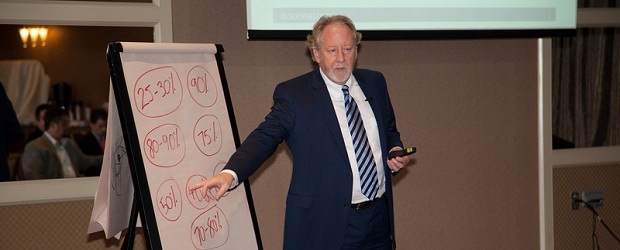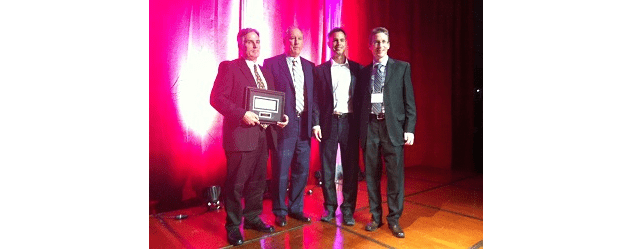The solution provider may be the biggest impediment to the cloud computing revolution fully taking hold, and much of the channel doesn’t have the resources or the structure to make the transition to doing business in the world of the cloud.
Those were among the takeaways on Wednesday as Bruce Stuart, channel financing model expert and president of channel consultancy Channelcorp, spoke to attendees at a seminar on channel economics as part of CDN’s 2013 Channel Elite Awards.
Cloud computing is going to have a significant impact on the channel, said Stuart. And the change isn’t in the technology; it’s in the business model.
“The most major structural change I’ve seen in 25 years is the move from transactional revenue to recurring revenue with the move to the cloud and managed services,” said Stuart. “The real issue here isn’t so much the technological change; we have experience with that. The most challenging issue is this change is going to have an irrevocable change on income sheets and partner cash flow.”
That’s because the economics of the cloud are fundamentally different than on premise software for the channel, said Stuart. Instead of revenue coming in large chunks up front on contract signing, it comes in incrementally over time.
According to Channelcorp’s research, just 25 to 30 per cent of partners are recurring or cloud revenue ready today. This, despite the fact that 90 per cent of vendors have a cloud story to tell, and 80 to 90 per cent of CIOs say they at least want to explore the cloud in 2014. So the demand is there, and the supply, but the channel isn’t ready to connect the two.
“We have a pretty fundamental issue here,” said Stuart.
What’s more, Stuart said 50 per cent of partners are technically insolvent, operating with tight margins as they wait to get paid by clients before they can pay their bills. When they’re having trouble paying their bills, Stuart said it’s difficult to imagine how they could sustain $100,000 to $150,000 met negative cash flow for up to 10 months as they transition from a classic revenue model to a transactional revenue model.
“This is probably the most difficult set of business model transitions I’ve seen in my career. In essence, we’re going to a utility model, which means instead of lumps of big transactions … we’re talking about a model built on return on invested capital,” said Stuart.
Making the transition is a bit like a bone marrow transplant, said Stuart; it’s delicate. Making it successfully will require leadership committed to the change to drive it across the organization, a dedicated marketing person – a resource not many partners have – focused on new customer acquisition, and changes to sales compensation and incentivizing. Partners need to begin the transition will still maintaining their legacy business to finance the transition, starting by converting and going deeper with their own install base and then branching out.
“If you don’t do something, your business is at significant risk,” said Stuart.
In an interview with CDN after his presentation, Stuart said the channel will look very different 10 years from now than it does today.
“I think first off, there’s going to be some channel partners that decide they won’t want to engage, they don’t want to make the investments, there will be kind of an end of life strategy for the business, and five to ten years from now they won’t be here,” said Stuart.
There will be other partners that do transition successfully, others that are born in the cloud from day one, and new specifies and subspecies of partners and maybe some different participants too.
“The channel partner isn’t going away, but the channel is certainly transforming itself,” said Stuart.






Many IT resellers have a mature sales force that have seen the higher commissions in the past and so transitioning to the annuity model is not perceived to be in their best interest from an income perspective. Take a software sale from 3 years ago at $300K, then spread the payments over 3 years to 100K, now erode it deeper to an annuity model. It is great to talk about all the managed services that are an add on, but services have always been part of every deal.
Transitioning to an annuity model requires a change in sales force thinking as they are the first touch to the customer.
If you add on the erosion of hardware margins, it is really about the impact to the bottom line. The sales reps pocket book.
Gail,
You are absolutely correct in your assessment of the challenge. The change starts with guidance from senior management followed by a very determined effort across the board to make the nest of transitions that have to happen, happen. You, and other readers may find that the video available at http://www.computerdealernews.com/video/cea-bruce-stuarts-future-outlook-for-the-channel provides some needed focus on the key issues associated with the transition or transformation.
Bruce Stuart
http://www.channelcorp.com